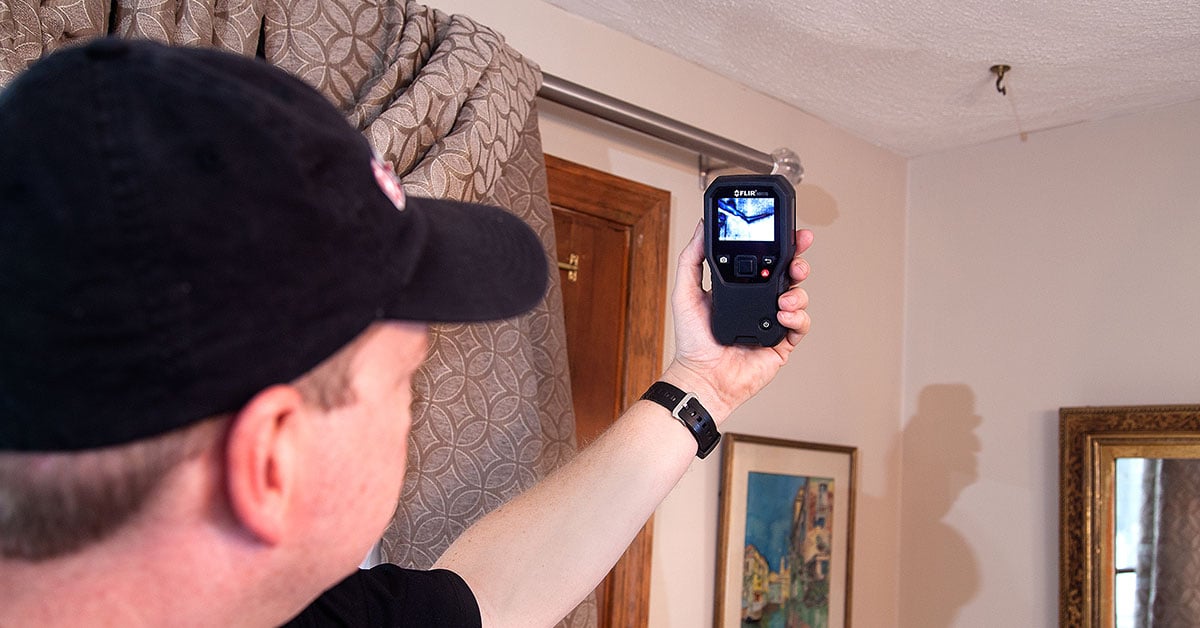Just how to Examine If Your Residence Has a Hidden Leak
Just how to Examine If Your Residence Has a Hidden Leak
Blog Article
Do you find yourself hunting for help around Hacks to detect leaks?

Early detection of dripping water lines can minimize a prospective catastrophe. Some small water leaks might not be noticeable.
1. Analyze the Water Meter
Every house has a water meter. Examining it is a guaranteed way that aids you uncover leaks. For beginners, switch off all the water resources. Guarantee no person will certainly flush, use the tap, shower, run the cleaning device or dish washer. From there, go to the meter as well as watch if it will alter. Since nobody is utilizing it, there need to be no motions. If it relocates, that indicates a fast-moving leakage. Furthermore, if you identify no changes, wait an hour or more as well as check back once again. This means you may have a slow leak that could even be below ground.
2. Examine Water Intake
If you detect sudden adjustments, despite your consumption being the exact same, it suggests that you have leaks in your plumbing system. An unexpected spike in your bill shows a fast-moving leak.
Meanwhile, a steady increase each month, despite the exact same routines, reveals you have a sluggish leakage that's also slowly rising. Call a plumber to extensively check your residential property, specifically if you feel a cozy location on your flooring with piping underneath.
3. Do a Food Coloring Test
When it comes to water consumption, 30% comes from bathrooms. If the shade somehow infiltrates your dish throughout that time without flushing, there's a leakage between the tank as well as bowl.
4. Asses Outside Lines
Do not neglect to examine your exterior water lines also. Test faucets by affixing a garden hose pipe. Ought to water permeate out of the connection, you have a loose rubber gasket. Change this and make certain all connections are tight. It will aid get it skillfully examined and kept yearly if you have actually obtained a sprinkler system. One small leakage can waste tons of water as well as spike your water bill.
5. Examine the scenario and also evaluate
Home owners need to make it a routine to check under the sink counters and also also inside closets for any kind of bad odor or mold growth. These two red flags show a leakage so timely focus is needed. Doing regular inspections, even bi-annually, can conserve you from a major problem.
Much more significantly, if you recognize your home is already old, keep a watchful eye on your heating systems, hose pipes, pipelines etc. Look for discolorations as well as damaging as most home appliances and pipes have a life span. They will additionally naturally deteriorate due to deterioration. Do not wait for it to intensify if you think dripping water lines in your plumbing system. Call an expert plumber as soon as possible so you do not wind up with a horrible mess in your house.
Early discovery of leaking water lines can alleviate a possible disaster. Some small water leakages may not be visible. Examining it is a surefire method that assists you discover leakages. One small leakage can lose loads of water as well as increase your water expense.
If you presume dripping water lines in your plumbing system, do not wait for it to intensify.
WARNING SIGNS OF WATER LEAKAGE BEHIND THE WALL
PERSISTENT MUSTY ODORS
As water slowly drips from a leaky pipe inside the wall, flooring and sheetrock stay damp and develop an odor similar to wet cardboard. It generates a musty smell that can help you find hidden leaks.
MOLD IN UNUSUAL AREAS
Mold usually grows in wet areas like kitchens, baths and laundry rooms. If you spot the stuff on walls or baseboards in other rooms of the house, it’s a good indicator of undetected water leaks.
STAINS THAT GROW
When mold thrives around a leaky pipe, it sometimes takes hold on the inside surface of the affected wall. A growing stain on otherwise clean sheetrock is often your sign of a hidden plumbing problem.
PEELING OR BUBBLING WALLPAPER / PAINT
This clue is easy to miss in rooms that don’t get much use. When you see wallpaper separating along seams or paint bubbling or flaking off the wall, blame sheetrock that stays wet because of an undetected leak.
BUCKLED CEILINGS AND STAINED FLOORS
If ceilings or floors in bathrooms, kitchens or laundry areas develop structural problems, don’t rule out constant damp inside the walls. Wet sheetrock can affect adjacent framing, flooring and ceilings.
https://www.servicemasterbyzaba.com/blog/how-to-detect-water-leakage-in-walls/

I stumbled upon that post about Hacks to detect leaks when scouting around the web. Are you aware of somebody else who is serious about the subject? Why not share it. Thanks a bunch for your time. Visit again soon.
Report this page